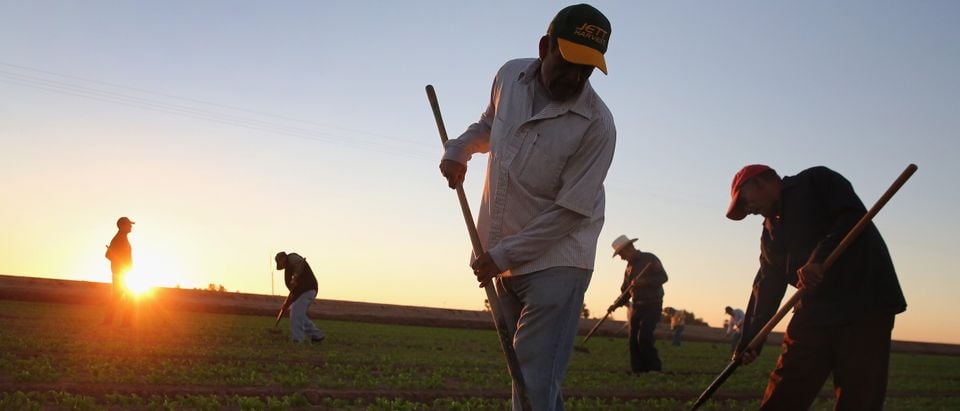It’s widely known — or many farmers will be happy to tell you — just how intelligent you have to be to make a living farming in America. Unlike other businesses that require a very narrow scope of expertise, farmers have to repeatedly demonstrate impressive proficiency across a wide variety of disciplines. They have to be business experts to operate multi-million dollar operations. They also have to be horticulturalists and agronomists, along with also being skilled in animal husbandry, mechanics and hydrology.
In short, an average American farmer is a venerable “jack of all trades.”
That’s why it’s simply not believable when some inside the beltway (sometimes even at the highest levels) peddle the argument that using E-Verify is too difficult for farmers to grasp. E-Verify is a web-based system that allows employers to authenticate the legal work eligibility of an applicant after they have been offered a job. Unfortunately, since E-Verify was first implemented as a “pilot program” in 1996, its detractors (cheap labor groups) have been very successful at peddling misconceptions about it. However, if you examine the facts, it’s nearly impossible to come up with a legitimate objection to using E-Verify.
First and foremost, this program is neither confusing nor burdensome. In fact, it works in much the same way as a merchant swipes a credit card. It also safeguards employers by eliminating any need for them to become document experts. When an employer uses E-Verify, the liability of determining the legal status of an employee falls on the government, not the employer.
Additionally, the verification process is quick to learn and easy to operate. United States Citizenship and Immigration Services (USCIS), the program’s managing authority, estimates that it only takes an average of 12 minutes to learn about, complete, assemble, and file the I-9 form. On the other side, E-Verify returns initial verification information to the employer within three to five seconds.
Moreover, not only is E-Verify completely free, but it is more than 99 percent accurate. This accuracy minimizes the illegal job market—a huge pull factor for illegal aliens to come to the U.S. — and ensures that American workers get a fair shot at American jobs. Today, over twenty states already require the use of E-Verify by certain employers; and every state that enacted or expanded E-Verify after 2008, (except one) saw their unemployment rates drop— even when the national rate increased. Unemployment rates dropped even further in states that mandated E-Verify for all employers.
Finally, at a time when Americans appear divided on many issues, E-Verify remains popular. Over 73 percent of poll respondents favor mandatory use of E-Verify while only 8.6 percent oppose it. Interestingly, support for E-Verify also crosses both party and ethnic/racial lines. Politically, 54.6 percent of Democrats, 90.5 percent of Republicans and 78.4 percent of Independents support it. Demographically, 80.2 percent of white voters, 58.4 percent of Hispanic voters, 52.7 percent of black voters and 73.8 percent of Asian voters support E-Verify.
So why is this easy, free, well-liked program not yet mandated? The simple reality is that there is a broad network of employer organizations that oppose the system because it would deprive them of cheap, exploitable, illegal alien labor.
Today’s farmers routinely use sophisticated technologies such as robots, temperature and moisture sensors, aerial images, and GPS technology. Often they are scientists, bookkeepers, field workers, and business owners all at the same time. And while farmers might not want to use it — the long-term addiction to cheap labor is real — it’s ridiculous to argue that it’s too difficult, or that they’re not smart enough to use it.
In fact, on the long list of a farmer’s daily tasks, using E-Verify would be the easiest chore by far.
Dave Ray is an agriculture economist and director of communications at the nonprofit Federation for American Immigration Reform (FAIR).
The views and opinions expressed in this commentary are those of the author and do not reflect the official position of The Daily Caller.


